Having a gas furnace in your home gives you warmth and comfort. But does your gas furnace need a chimney? How hot can it get? Is your gas furnace in a safe area? Worry no more! We've researched the answers to these questions.
Yes, a gas furnace needs a chimney. However, the chimney may not be a good option to release the excess heat from the house.
Instead, it's ideal to connect a gas furnace to a ventilation system with a fan that will allow the air to exit. The chimney alone may not suck the air out of the furnace. It should have a fan to exhaust the air to an open space.
This article will teach you how a gas furnace works and if a chimney is necessary. We'll discover if it creates smoke and where a gas furnace should sit. Get ready to learn more about relevant topics we'll discuss throughout. So continue reading!
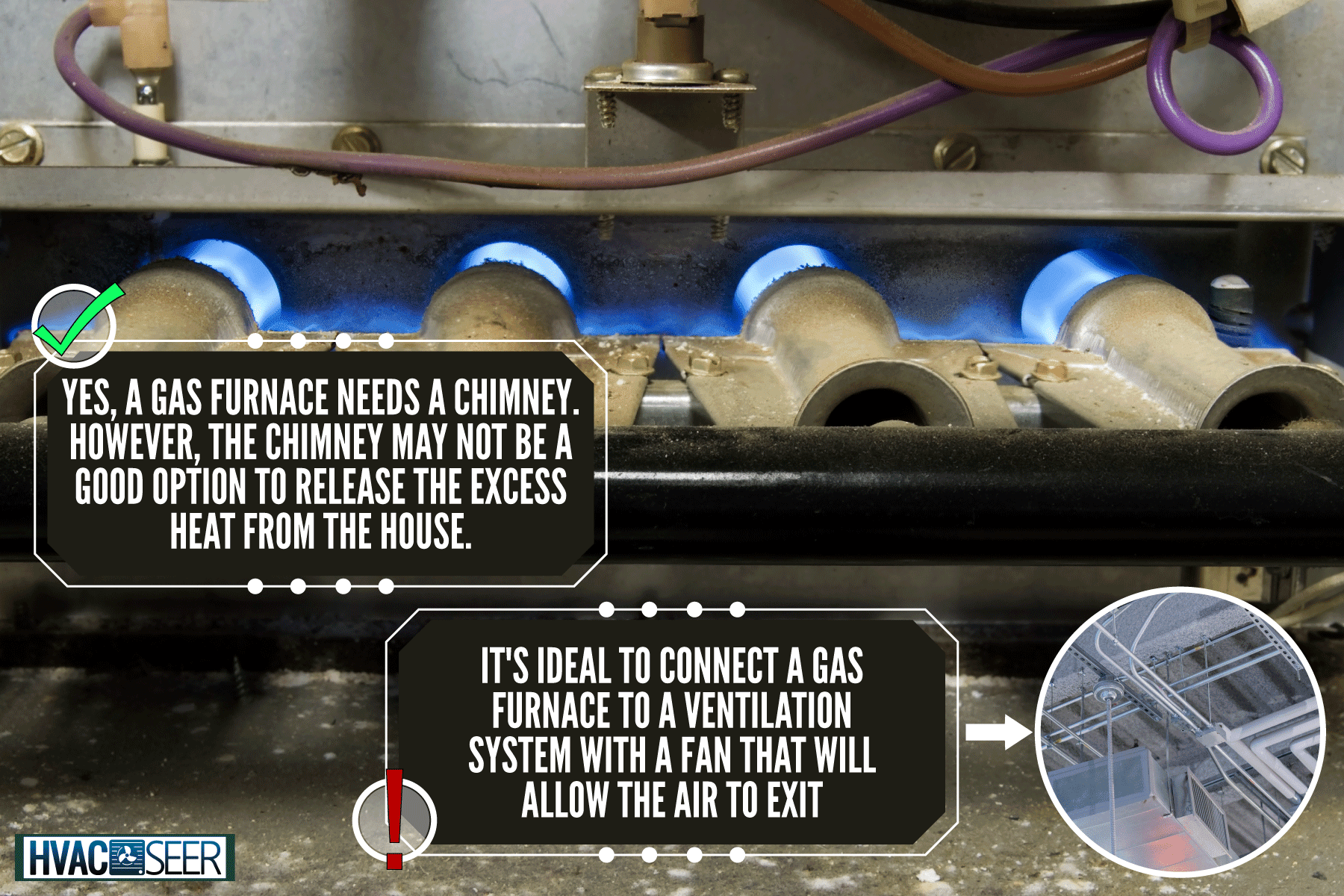
Does A Gas Furnace Need A Chimney?
Ideally, a gas furnace needs a ventilation system rather than a chimney. But it does not eliminate the capability of a chimney to vent the air out from a furnace. A ventilation system with fans from one end to another is a practical way of distributing hot air before allowing it to exit the open space.
In comparison, a chimney directs the air outside without utilizing the temperature across other areas of the house. A chimney is good at isolating the hot air if it doesn't need to be shared with other rooms.
On the other hand, a ventilation system maximizes the efficiency of hot air through registers that give way to various areas. Choosing any of the two still depends on your preference.
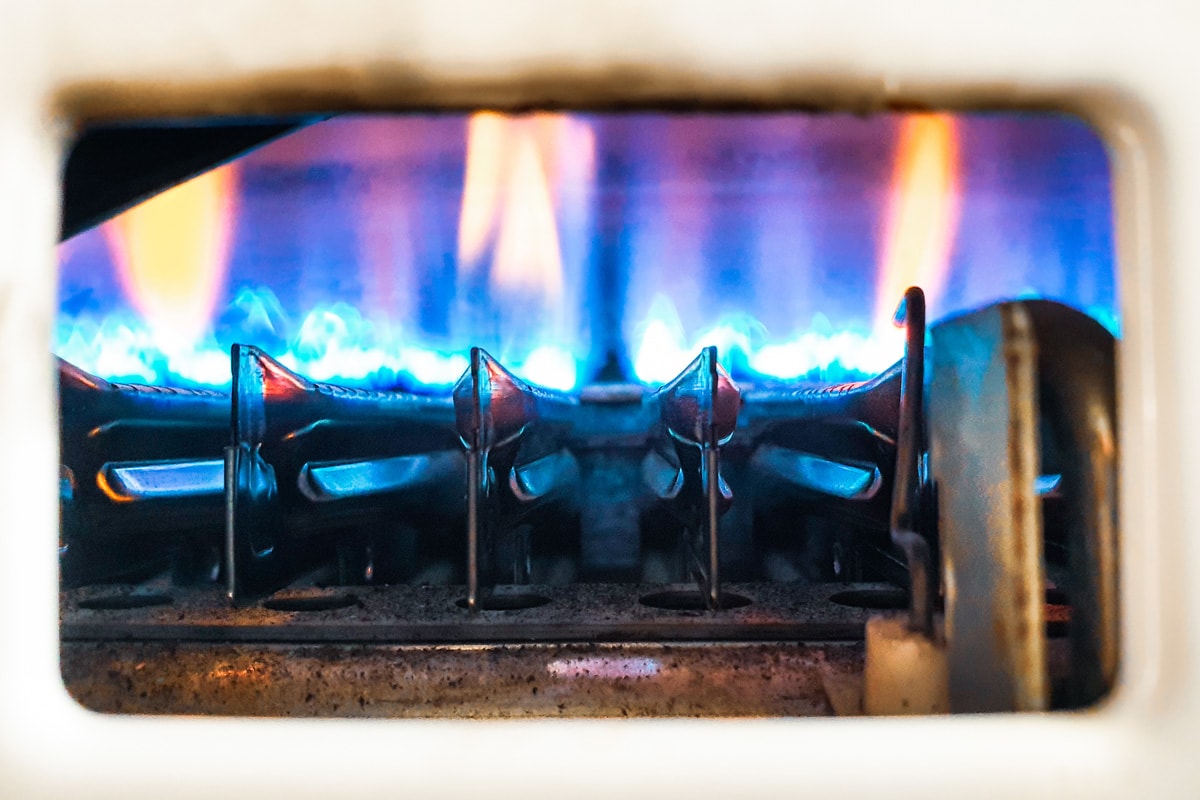
What If the House Has No Chimney?
You might want to consider having a chimney or proper ventilation before getting a furnace. Otherwise, you need to install an airway for the gas to evaporate. You cannot use a stove in an enclosed or unventilated area, as this can pose health issues and be a possible cause of fire.
Also, it's highly recommended to seek a licensed professional before buying a furnace yourself. This is to further assess your house's structure and have the right furnace in your area.
Additionally, you would want to learn the building codes of your local community. A permit may be required if you want to install a chimney in your home.
How High Should A Chimney Be?
Ideally, a chimney should be 10 feet tall starting from the point where the furnace is located. The chimney should rise at least three feet above the roof and two feet higher than any other part of the house.
This means that the chimney should be the house's highest point to reduce the air pressure and prevent structural damage. There should be a cap to restrict rain from entering your home.
You should install a fan in the chimney to make it easier for the air to rise and spread outside. The blower keeps the room temperature at a comfortable level.
See this fan for the chimney on Amazon.
Where Should A Gas Furnace Be Placed?
You should know where to place a gas furnace in your home. Aside from the typical setup in which a furnace is always under a chimney, there are alternatives in which a chimney is not close to the furnace.
See below for some areas of the house where a gas furnace can sit.
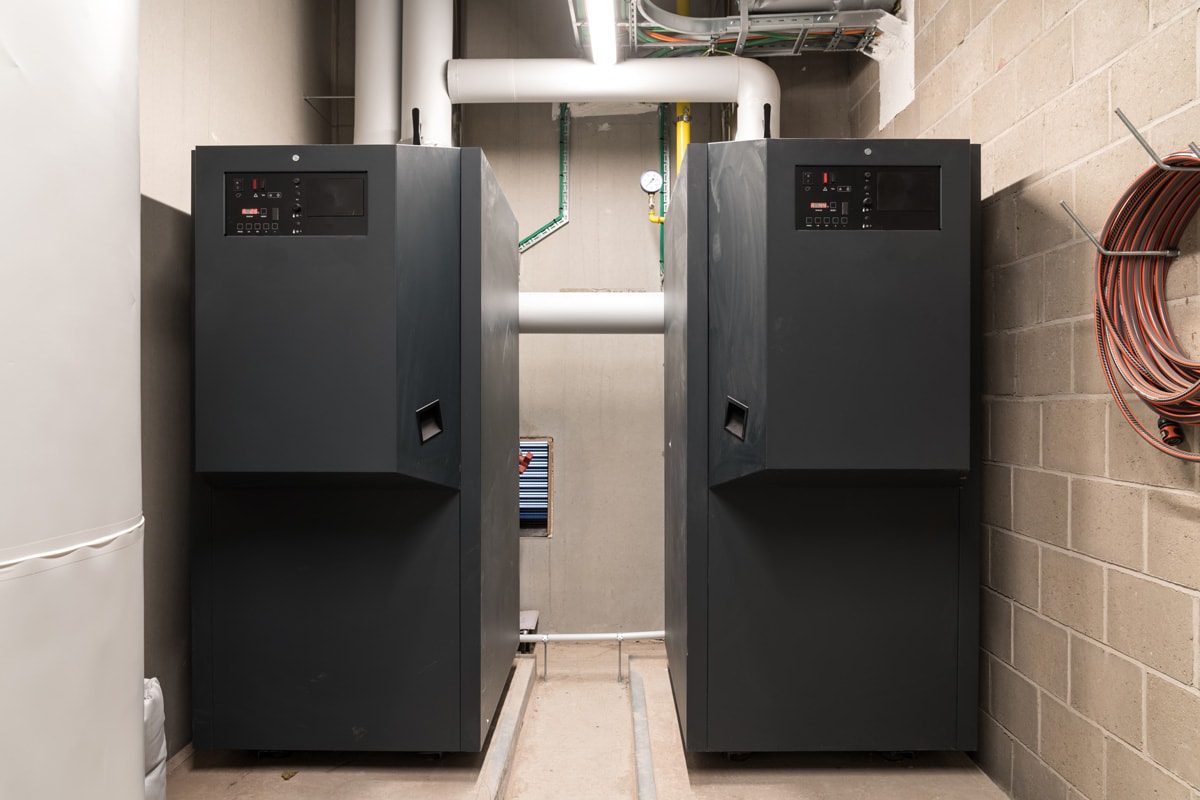
Living Room
It's common to place a furnace in the living room, since it's a place where the family usually gathers. A furnace helps control the room temperature with more comfortable air. Just be sure there's a chimney, or at least leave the windows open to allow the exchange of hot air.
Also, furniture should be at least three feet away from the furnace to keep it in good condition. You'll want to rearrange your house furniture to have adequate spacing.
Basement
A basement is a good location for a furnace. The furnace can reduce the moisture in a basement and improve the temperature during winter. It's known that the basement probably has the most complex ventilation system. That's why you need a chimney or a way for air to circulate through air ducts.
Remember to take extra caution. If your basement has poor ventilation, it's better to resolve the ventilation first. Otherwise, the furnace may force combustion that can start a fire.
Attic
The attic is another option should you want to hide the furnace but still warm the house. The ventilation system should direct the air down to all rooms in the house.
However, an attic may be limited in space. Don't force the furnace to fit in an attic or crawlspace. You should also have easy access to the furnace.
How Long Should A Gas Furnace Run?
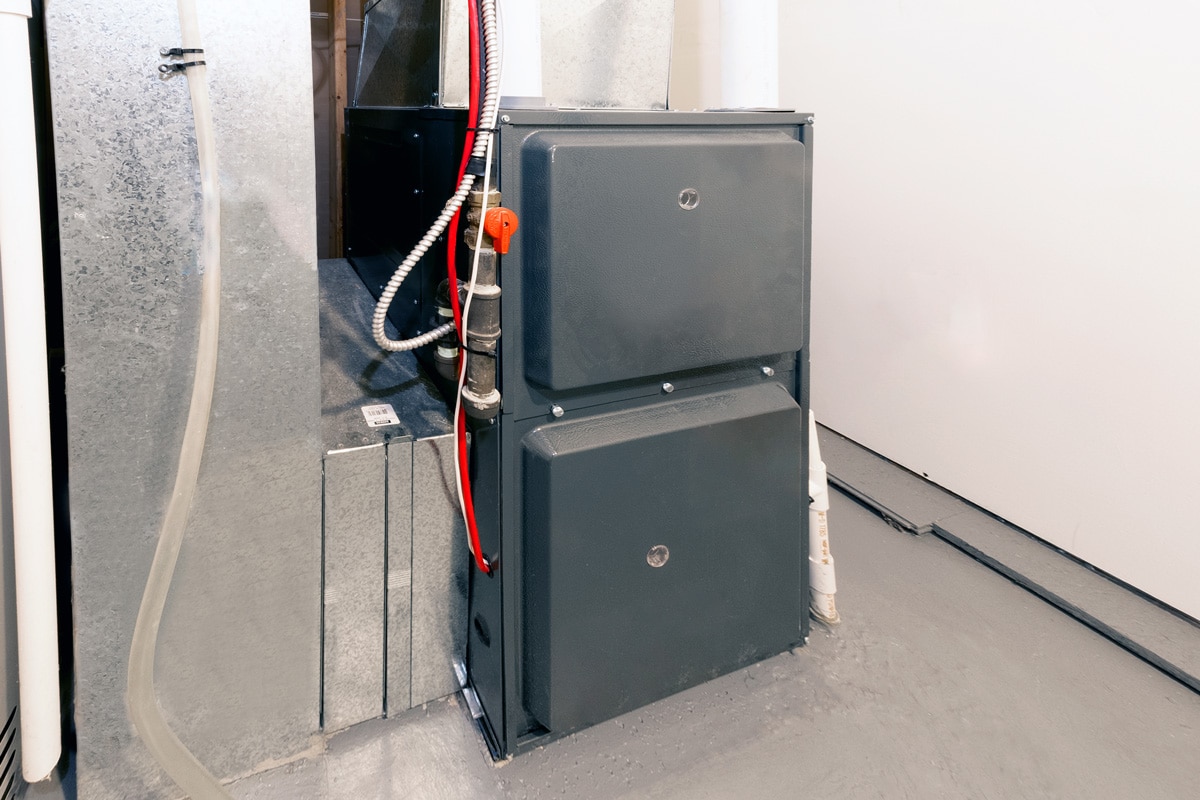
You can let the gas furnace run for between 10 and 15 minutes per cycle. At least three cycles per hour are acceptable enough for safety and comfort.
However, it doesn't mean that you should consistently turn on the furnace every hour. Instead, it would help if you balanced the current weather and temperature while using the furnace.
You can also let it rest when you think the temperature is sufficient for the room. Keep in mind that the recommended room temperature is around 68 degrees Fahrenheit. You can have a thermostat to see the temperature.
See this thermostat on Amazon.
Do Gas Furnaces Need A Refill?
Natural gas furnaces function with a natural gas called propane. There's no specific time as to how long before you refill a furnace. But it will depend on the furnace's size and frequency of use. Also, you need an authorized technician to refill your gas furnace.
How Efficient Are Gas Furnaces?
There is a standard measurement for the efficiency of a furnace known as AFUE, or Annual Fuel Utilization Efficiency. The AFUE is based on energy input vs. output.
In other words, AFUE is the percentage of use compared to the amount spent. The higher value of AFUE indicates more efficient furnace performance.
Modern gas furnaces have an AFUE rating of between 87-97% and can reach temperatures of 120 to 450 degrees Fahrenheit. However, you can check the AFUE rating on the label of your furnace. The efficiency and temperature range will depend on the furnace manufacturer.
Electric Vs. Gas Furnace

You might be wondering how gas differs from an electric furnace. That's why it's relevant to distinguish their differences. See below some comparison between the two.
Quality
When compared to an electric furnace, a gas furnace saves you money in the long run. It's because you can maximize energy consumption with fewer bills to pay.
When using an electric furnace, you should be ready for a higher electric bill. The gas furnace also releases cleaner air that raises the temperature faster.
However, a unit of a gas furnace is riskier due to combustion. An electric furnace also risks wire incompatibility if you plug it into the wrong power supply. So it's essential to find the verification on the unit that says that the furnace of any type is certified safe by authorities.
On the other hand, an electric furnace doesn't need a refill. Unlike with a gas furnace, you don't need to mark the calendar for scheduled refilling.
Furthermore, an electric furnace per unit is cheaper and easier to install. You simply need to check the compatibility of voltage, wire size, and other basic components of electricity. But be ready for a higher electric bill.
Heating Capacity
As mentioned, a gas furnace can heat up to around 120 degrees Fahrenheit. But an electric furnace starts around 95 degrees Fahrenheit. This is different from an industrial furnace that can reach up to 3,300 degrees Fahrenheit. However, using an industrial furnace in a residential area is unsafe.
Conclusion
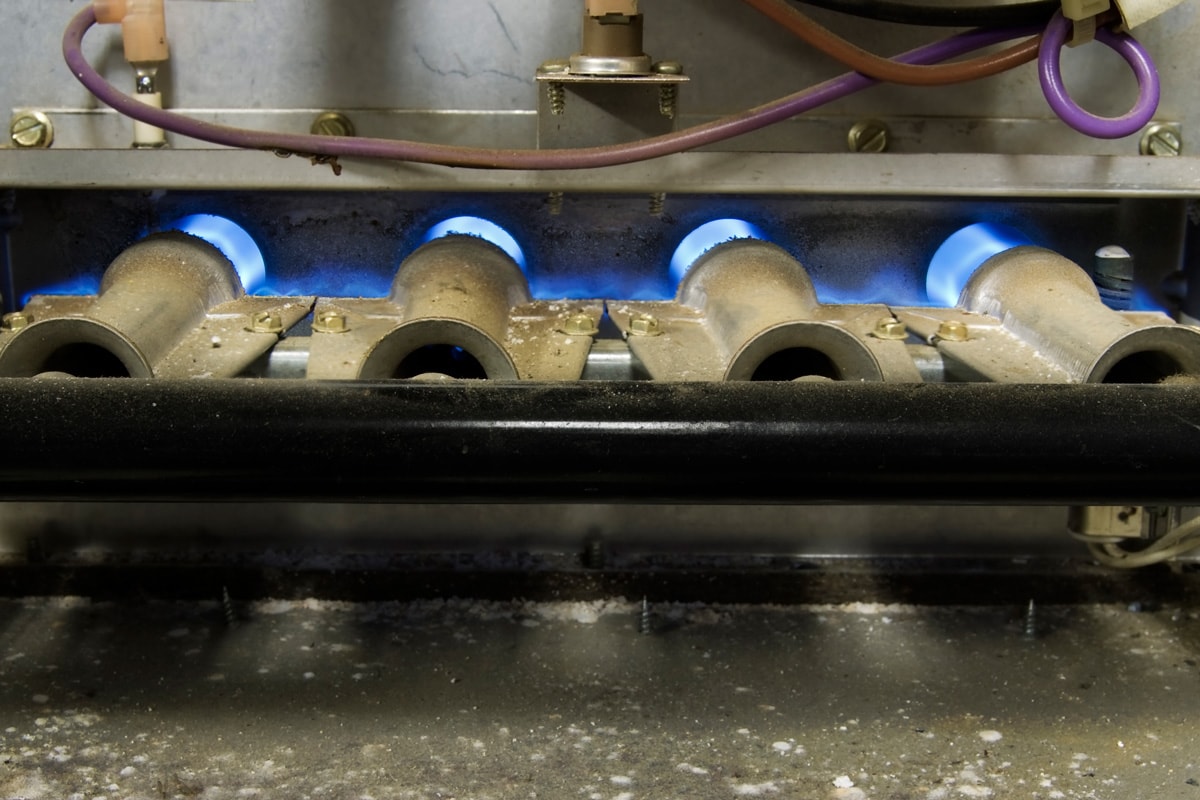
With this article, we learned that a gas furnace needs a chimney or a ventilation duct to allow the air to exhaust. We briefly discussed the basics of the chimney, like its height.
We also learned where to place the furnace. A living room and a basement are common, yet an attic is possible under a proper assessment.
Lastly, we learned how long a furnace should run and if it needs a refill. We covered some of the differences between the gas and electric furnaces. Don't forget to check the quality of any furnace type for safety reasons.
If you want to learn more about furnaces and related topics, visit our articles here:


